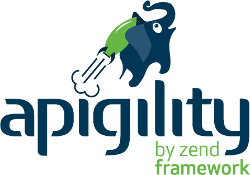Hypertext Application Language (HAL)
HAL, short for "Hypertext Application Language", is an open specification describing a generic structure for RESTful resources. The structure it proposes readily achieves the Richardson Maturity Model's Level 3 by ensuring that each resource contains relational links, and that a standard, identifiable structure exists for embedding other resources.
Essentially, good RESTful APIs should:
- expose resources
- via HTTP, using HTTP verbs to manipulate them
- and provide canonical links to themselves, as well as link to other, related resources.
Hypermedia Type
HAL presents two hypermedia types, one for XML and one for JSON. Typically, the type is only relevant for resources returned by the API, as relational links are not usually submitted when creating, updating, or deleting resources.
The generic mediatype that HAL defines for JSON APIs is application/hal+json.
Resources
For JSON resources, the minimum you must do is provide a _links property containing a self
relational link. As an example:
{
"_links": {
"self": {
"href": "http://example.org/api/user/matthew"
}
},
"id": "matthew",
"name": "Matthew Weier O'Phinney"
}
If you are including other resources embedded in the resource you are representing, you will provide
an _embedded property, containing the named resources. Each resource will be structured as a HAL
resource and contain at least a _links property with a self relational link.
{
"_links": {
"self": {
"href": "http://example.org/api/user/matthew"
}
},
"id": "matthew",
"name": "Matthew Weier O'Phinney",
"_embedded": {
"contacts": [
{
"_links": {
"self": {
"href": "http://example.org/api/user/mac_nibblet"
}
},
"id": "mac_nibblet",
"name": "Antoine Hedgecock"
},
{
"_links": {
"self": {
"href": "http://example.org/api/user/spiffyjr"
}
},
"id": "spiffyjr",
"name": "Kyle Spraggs"
}
],
"website": {
"_links": {
"self": {
"href": "http://example.org/api/locations/mwop"
}
},
"id": "mwop",
"url": "http://www.mwop.net"
},
}
}
Note that each item in the _embedded list can be either a resource or an array of resources. That
takes us to the next topic: collections.
Collections
Collections in HAL are literally just arrays of embedded resources. A typical collection will
include a self relational link, but also pagination links - first, last, next, and prev
are standard relations. Often APIs will also indicate the total number of resources, how many are
delivered in the current payload, and potentially other metadata about the collection.
{
"_links": {
"self": {
"href": "http://example.org/api/user?page=3"
},
"first": {
"href": "http://example.org/api/user"
},
"prev": {
"href": "http://example.org/api/user?page=2"
},
"next": {
"href": "http://example.org/api/user?page=4"
},
"last": {
"href": "http://example.org/api/user?page=133"
}
},
"count": 3,
"total": 498,
"_embedded": {
"users": [
{
"_links": {
"self": {
"href": "http://example.org/api/user/mwop"
}
},
"id": "mwop",
"name": "Matthew Weier O'Phinney"
},
{
"_links": {
"self": {
"href": "http://example.org/api/user/mac_nibblet"
}
},
"id": "mac_nibblet",
"name": "Antoine Hedgecock"
},
{
"_links": {
"self": {
"href": "http://example.org/api/user/spiffyjr"
}
},
"id": "spiffyjr",
"name": "Kyle Spraggs"
}
]
}
}
The various relational links for the collection make it trivial to traverse the API to get a full list of resources in the collection. You can easily determine what page you are on, and what the next page should be (and if you are on the last page).
Each item in the collection is a resource, and contains a link to itself, so you can get the full resource, but also know its canonical location. Often, you may not embed the full resource in a collection -- just the bits that are relevant when doing a quick list. As such, having the link to the individual resource allows you to get the full details later if desired.
Interacting with HAL
Interacting with HAL is usually quite straight-forward:
-
Make a request, using the
Acceptheader with a value ofapplication/jsonorapplication/hal+json(the latter really isn't necessary, though). -
If
POSTing,PUTting,PATCHing, orDELETEing a resource, you will usually use aContent-Typeheader of eitherapplication/json, or some vendor-specific mediatype you define for your API; this mediatype would be used to describe the particular structure of your resources without any HAL_links. Any_embeddedresources will typically be described as properties of the resource, and point to the mediatype relevant to the embedded resource. -
The API will respond with a mediatype of
application/hal+json.
When creating or updating a resource (or collection), you will submit the object, without relational links; the API is responsible for assigning the links. If we consider the embedded resources example from above, I would create it like this:
POST /api/user HTTP/1.1
Accept: application/json
Content-Type: application/vnd.example.user+json
{
"id": "matthew",
"name": "Matthew Weier O'Phinney",
"contacts": [
{
"id": "mac_nibblet"
},
{
"id": "spiffyjr"
}
],
"website": {
"id": "mwop"
}
}
The response would look like this:
HTTP/1.1 201 Created
Content-Type: application/hal+json
Location: http://example.org/api/user/matthew
{
"_links": {
"self": {
"href": "http://example.org/api/user/matthew"
}
},
"id": "matthew",
"name": "Matthew Weier O'Phinney",
"_embedded": {
"contacts": [
{
"_links": {
"self": {
"href": "http://example.org/api/user/mac_nibblet"
}
},
"id": "mac_nibblet",
"name": "Antoine Hedgecock"
},
{
"_links": {
"self": {
"href": "http://example.org/api/user/spiffyjr"
}
},
"id": "spiffyjr",
"name": "Kyle Spraggs"
}
],
"website": {
"_links": {
"self": {
"href": "http://example.org/api/locations/mwop"
}
},
"id": "mwop",
"url": "http://www.mwop.net"
},
}
}
PUT and PATCH operate similarly.
